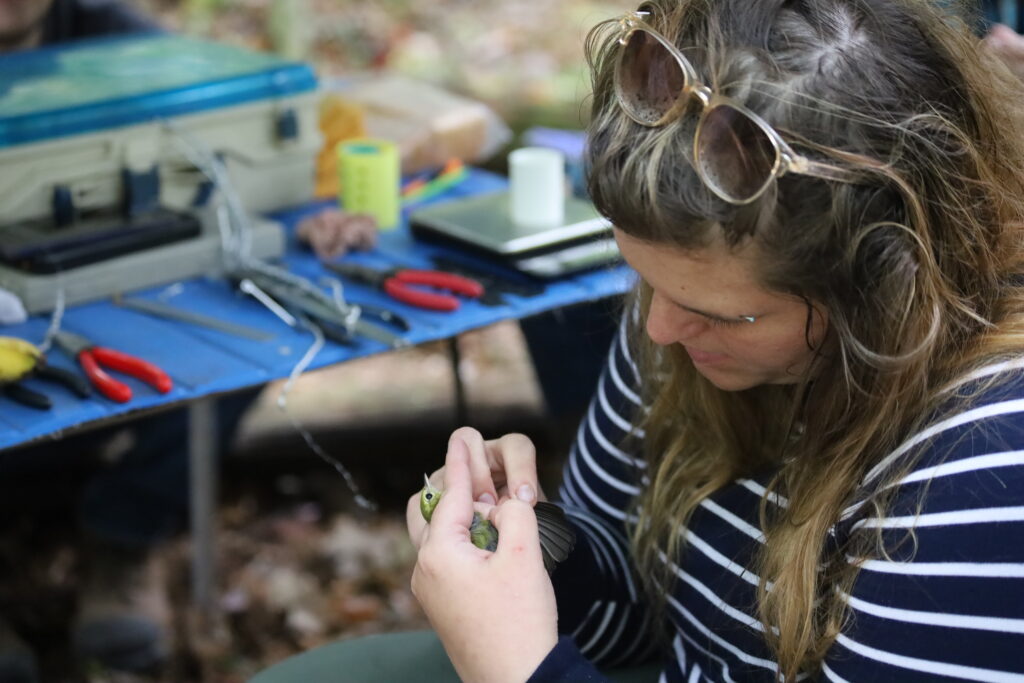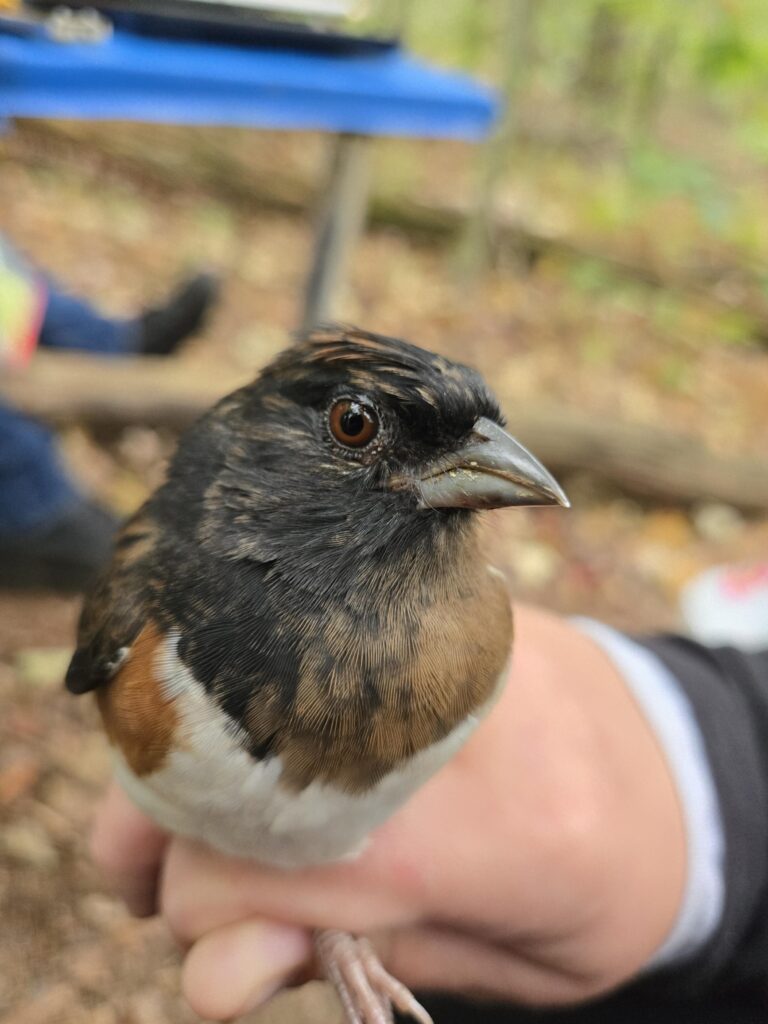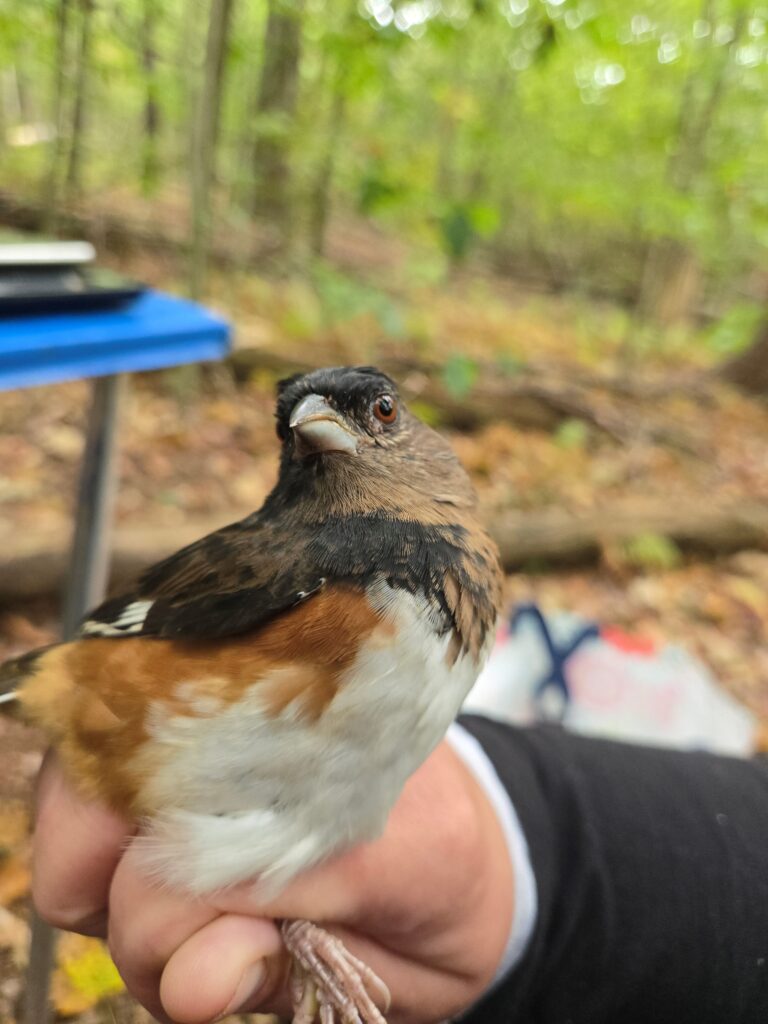National Aviary Forest Gap Project Assesses Pennsylvania Forest Management
Spring/Summer 2024
When you think of the word, “forest,” you likely imagine a densely wooded area of tall trees. In reality, natural forests are home to trees of many plant species made up of varying ages and sizes. Many native species, including avian populations, benefit from these different types of forest environments. While not all forests are managed, a sustainable forest is one that balances the needs of wildlife, the environment, and diverse forest communities. That’s why it is so important to use a sustainable approach to managed forests, one that can ensure the viability of diverse species.
National Aviary Director of Field Conservation, Dr. Steven Latta is addressing this issue by conducting field research in Northwestern Pennsylvania as part of his ongoing study, “Using Forestry to Enhance Bird Diversity for Conservation.”
Recent work has shown that large, stand-replacement clear-cuts (forestry areas essentially devoid of trees), often as large as 40 acres, provide important habitat areas for some bird species known as “early successional species.” These birds do best by inhabiting shrubby areas (with new and small growth) caused by a major disturbance. These same clear-cuts benefit birds thought to require extensive, mature forest growth! This is because their fledglings use the clear-cuts for better access to food and dense ground coverage for a short, vitally important, time in their life cycle. But, at the same time, these clear-cut areas can be detrimental to other wildlife species. That’s because unplanned clear-cuts can become large areas of even-aged forests with comparatively little diversity in terms of vegetation, tree age, or tree size throughout the life of the forest.
An alternative management strategy to even-aged forests is, perhaps unsurprisingly, uneven-aged forests! These play a crucial role in providing forest habitats appropriate for a wider variety of flora and fauna. Often the result of natural disasters, blow-downs, microbursts, or tree falls, small open spaces (or gaps) within forests create a unique environment that contributes to supporting a thriving avian population! In Dr. Latta’s study, he has partnered with the Foundation for Sustainable Forests to test a unique forest management model that would use multiple entry points of a forest for very light timber harvests. In some ways, these harvests mimic natural gaps that occur in unmanaged forests. Our goal is to determine how this management style could benefit birds and plants and support diverse, healthy forests.

Early GAP Project Results
Utilizing family-owned forest plots managed by the Foundation for Sustainable Forests, Dr. Latta and his team hypothesize that by creating very small, one to five-acre gaps in the forest through group selection cuts (removing trees in small groups to create openings in a forest), we can provide habitat opportunities for important early-successional species, as well as habitat for dispersing fledglings and molting adults of species that nest in the surrounding mature forest. This process involves a highly strategic removal of trees, which creates an opening in the forest canopy, allowing more sunlight to reach the forest floor, and encouraging the growth of shrubs and saplings that will become the future forest.
If successful, this approach will have the added benefit of restoring forests to an uneven-aged condition which is beneficial to the bird species and other wildlife that require structurally diverse forests to thrive. This forest management style also supports families and landowners with small forest plots, and the economic viability of rural communities through the restoration of working forests. The early results of the GAP Project study are very promising. Once completed and published in the peer-reviewed literature, it is believed that project results will be useful to the successful management of public and private forests in Pennsylvania…and beyond!
A Surprising Discovery


Students from Bowling Green State University (BGSU), who are affiliated with the National Aviary’s Forest Gap Research Program, were lucky enough to catch an Eastern Towhee (an early successional species) with a fascinating, rare genetic anomaly! Lead Bird Bander, Nancy Ransom, set about banding an Eastern Towhee in September 2024 and knew immediately by its appearance that THIS bird was outside of the usual variation range that we might see while banding the species. In fact: this little bird has the external appearance of BOTH a male and a female: also known as a bilateral (side-to-side) gynandromorph. In this instance, the Eastern Towhee’s right side appeared male-like (black feathers); the left side was female-like (brown feathers). This uniqueness is easier to determine in species where males and females are known for different plumage hues.
To give you an example of how rare of an experience it is to band a gynandromorph, National Aviary Ornithologist Bob Mulvihill has seen just three in Southwestern Pennsylvania over more than 40 years of research, examining more than 250,000 (yes: more than a QUARTER of a million!) birds! “Only when we are privileged to be able to study a large number of birds, such as when we are conducting a bird banding study, do we have an increased chance of encountering an unusual variant,” said Mulvihill. “We recognize them as being unusual because we already have handled so many individuals of the species that we can quantify the extent of the normal variation in color or pattern in that species.”
After banding and photographs, the bird was safely released back into its forest habitat! Stay tuned for more project discoveries.
